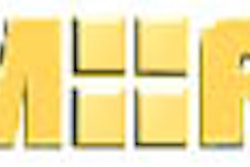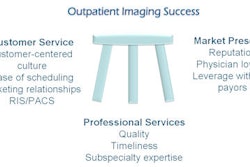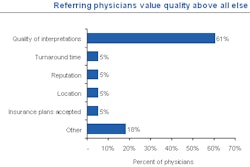The U.S. Centers for Medicare and Medicaid Services (CMS) had a chance to put the brakes on physician self-referral when it released its final rules last week governing the Medicare Physician Fee Schedule (MPFS) and the Hospital Outpatient Prospective Payment System (HOPPS). Instead, the agency punted, and the new rules for both payment systems actually may make it easier for nonradiologist physicians to perform imaging procedures in their offices.
In July, CMS proposed that physician groups enroll as independent diagnostic testing facilities (IDTFs) and be subject to the quality standards that govern IDTFs as a way for the agency to address imaging utilization and quality issues. Self-referring physicians would no longer be able to operate outside of the IDTF framework.
The IDTF rules include a number of provisions designed to clamp down on unnecessary utilization of imaging services. One such rule, the antimarkup provision, sought to take the profit out of both the professional and technical components of diagnostic tests that are billed by one entity and provided by another. The rule mandates that an IDTF must have a supervising physician onsite, and that the supervising physician must have "proficiency" in the test that's being performed. Most observers interpret the rule as requiring the supervising physician to be a radiologist.
In last week's final rules, however, CMS said it would not implement the provision to require physician groups to enroll as IDTFs. What's more, CMS relaxed its requirements on how it defines who can be part of a practice, and thus who qualifies as a "supervising physician." Critics say that the rules make it easy for a practice to nominate one of their own physicians as the supervising physician, thereby continuing to self-refer.
CMS said it was taking the more relaxed stance due to provisions in the Medicare Improvements for Patients and Providers Act (MIPPA) of 2008, which was enacted in July. In addition to eliminating a 10.6% cut in Medicare payments, the law also addressed imaging overutilization by requiring all facilities that offer CT, MR, nuclear medicine, and PET for Medicare patients to be accredited by 2012.
But some industry observers believe that by not including the IDTF standards in its MPFS and HOPPS final rules, CMS missed an opportunity to curb physician self-referral right away, according to Thomas Greeson, a partner at Reed Smith of Falls Church, VA, who specializes in radiology-related regulatory matters.
"Because CMS did not adopt the IDTF rules, most physician practices can escape any markup restrictions on the technical component services," Greeson said. "With no proficiency requirements for the supervising physician, a typical referring group can be expected to designate one of its own physicians who 'shares the practice' as the general supervising physician."
"This exception renders the antimarkup rule ineffective," Greeson said. "It will have no effect on self-referral."
The American College of Radiology (ACR) of Reston, VA, also expressed disappointment in a statement, saying that it "believes that all providers in every practice setting should be required to meet all quality and performance standards that are required of IDTFs and accredited sites."
Conversion factors: MPFS and HOPPS
The MPFS and HOPPS final rules also established the conversion factors used to determine payment for Medicare and Medicaid services, including imaging. Effective January 1, 2009, the conversion factor for the MPFS will be $36.06, a 5.3% decrease from the current conversion factor of $38.08. MIPPA mandated a 1.1% increase in the conversion factor for 2008; it also dictated that the $5 billion impact from the last five-year review be removed as a budget neutral adjustment to the physician work values of the MPFS and instead applied to the conversion factor for 2009, according to the ACR.
This has caused an 8% decrease in the professional component for 2007 and 2008, a cut that will be returned back into the fee schedule calculations and dealt with instead through an adjustment in the conversion factor. Radiologists can expect a 2.7% increase in the professional component for 2009; but the technical component, which has not been affected by the agency's third five-year review, will now be cut 5.3%.
For hospital outpatient payments, the conversion factor in 2009 will be $66.06, a 3.6% increase from 2008's $63.69.
The agency also plans to implement five new composite ambulatory payment classifications (APCs) for ultrasound, CT/CT angiography with and without contrast, and MR/MR angiography with and without contrast. When more than one study is performed during the same session, the hospital will submit a claim for multiple studies and receive from CMS a bundled payment, the ACR said.
This protocol may have severe effects on payments for trauma cases, the ACR wrote, arguing that the bundling methodology for paying these composites works when two studies are done in the same session, but cuts reimbursement by as much as 75% when three or more studies are performed.
By Kate Madden Yee
AuntMinnie.com staff writer
November 4, 2008
Related Reading
CMS follows through with new physician fee schedule, July 18, 2008
Congress overrides Bush Medicare veto, July 16, 2008
Bush vetoes Medicare SGR bill, July 15, 2008
President threatens to veto Medicare bill, July 14, 2008
Physician pay cuts averted as Senate passes Medicare bill, July 10, 2008
Copyright © 2008 AuntMinnie.com



















